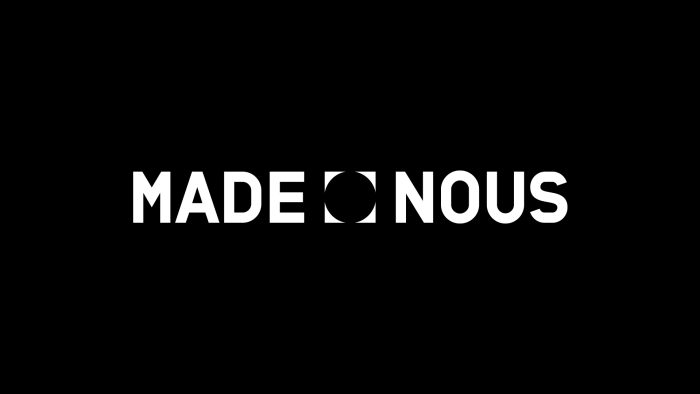Celebrating 15 years of the CMF
Fifteen years ago, the Canada Media Fund was created to help Canadian creators tell their stories. We talk with the fund’s President and CEO Valerie Creighton about its inception, financial and cultural impact, and what the future holds for the organization.

Time flies when you’re busy investing billions of dollars into Canada’s media industry.
This year, the Canada Media Fund (CMF) celebrates its 15th anniversary, making it the perfect time to look back at its achievements and, more importantly, look forward to its future.
Read about the CMF 15 video campaign
The CMF was established in April 2010 to replace the Canadian Television Fund and the Canada New Media Fund. Heritage Minister James Moore made the announcement.
“He said that in his opinion consumers, audiences, were going to be looking to watch content anytime, anywhere, anyplace from a device of their choice,” recalls CMF president and CEO Valerie Creighton via a video interview.
Creighton was present at that pivotal press conference, having been named the inaugural leader for the nascent organization, and says it was a new stipulation laid out by Moore that changed the funding landscape.
Not only would producers accessing the fund need to show their content on television, that content would have to screen on another platform, whether it be streaming or online or digital.
“Well, that sparked a firestorm that was unbelievable. Everybody in the country hated it,” she says. “People couldn't understand what he was talking about. It was very interesting because often governments will make a decision and the public will think, ‘What the hell were they thinking?’ In this case he was way ahead of the curve, ahead of the industry.”
Canadian creators hit their stride
Back in 2010, streamers, digital platforms, and social media sites were beginning to take shape, and Canadian content creators were stepping into this brave new world of diverse platforms and innovative funding models.
There was something else brewing.
Canadian creators were hitting their stride, producing popular, quality programs — and the CMF was there to lend a hand.
New shows such as Murdoch Mysteries, Baroness von Sketch Show, Kim’s Convenience, Orphan Black, Unité 9, Schitt’s Creek, and Vikings hit small screens, while big-screen films, including Midnight’s Children, Watermark, Blood Quantum, and Wildhood earned acclaim.

Children’s programming, web series, video games, DEI initiatives, co-productions with other nations, as well as Indigenous, documentary, and experimental programs, all received support.
The economic impact of the CMF—more than 19,000 projects since 2010, generating $24 billion in economic activity for Canada’s GDP—has changed the audiovisual industry’s landscape.
But beyond the numbers lies the cultural impact our shows, films, and games have made both here and abroad.
“Heartland just had its 18th season and hit its 250th episode in 2023,” notes Creighton. “They had a huge event in Calgary; they brought the main horse star, Spartan, onto the red carpet. Audiences enjoy that show because it's accessible. It’s the same with Murdoch Mysteries or Kim's Convenience. When we were in Korea people were showing me pictures of Kim's Convenience because it was the number one show in Korea.
“Vikings would have been another one, where it was the number one show in Iceland, the place where Vikings are from. These series are powerful statements that reflect our country but are also so compelling because they resonate with audiences around the world.”

Doling out the dollars
The CMF’s budget for the 2025/26 fiscal year is $346 million. The challenge for both the CMF and the country’s creators is how the funds are allocated.
“It’s my 19th year here, first at the Canadian Television Fund and now the CMF, and the thing I probably hear the most is how complicated the process is,” says Creighton.
The CMF is working to alleviate the problem.
“What people don't realize, and maybe we haven’t adequately informed people, is before you go to all the work of applying you can call up our staff and do a pre-consult. We can help work through your project. Our staff will say, ‘Okay, here's what you need to do to help yourself access the fund, to be competitive, because it's a very competitive environment.”
One reason it’s competitive is that so many Canadian creators are passionate about telling and sharing our stories. How the CMF helps creators do that for the next 15 years is what’s at stake.
“I don't have the answers for the future,” muses Creighton, “but I do think we have to really work together collectively as an industry to determine what we want this country to be. And a lot of that is coming through in the process that the CRTC is undertaking for implementing Bill C-11, the changes to the Broadcasting Act, to bring the streamers into the system, and that's a very complicated process.”
Those changes would require that streaming services contribute to and showcase Canadian content, reflecting Canada's diversity, including Indigenous languages.
“There's no problem with creativity in Canada,” she continues. “We have an abundance of it and the real question is the structures that we have built in this country, which have served the public and the country very well, are no longer the structures that serve the making of content because of these new changes.”
It all comes down to storytelling. The stories we tell about ourselves, our communities, our nation.
“Stories are what form us as people, and storytelling is a way to build relationships and remove conflict,” says Creighton. “We are living in a time of terrible polarization and when you listen to stories about human beings you realize how universal our experiences are and that they can help break down walls.”



